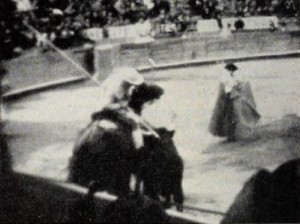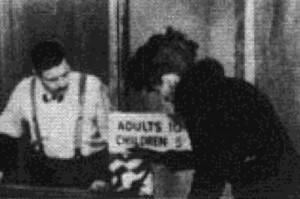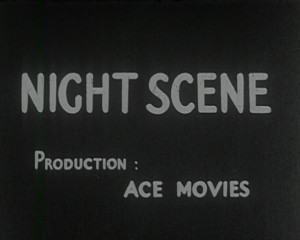"Edited film by Floyd Henry Wells, a retired salesman and a member of the Wally Byam Caravan Club of Airstream trailers, chronicling travel through New Zealand including scenic views, urban scenes, beaches, Puhoi Hotel, Lyltelton and Diamond Harbors, marina, fishing, Wairakei Geyser Valley, geysers, Tehokowhitu-atu archway, Maori Reserve and indigenous peoples, and motor camping (Rainbow Springs Motor Camp)," Human Studies Film Archives, Smithsonian Museum.
"Captain R.T.F. Thompson presented a movie record of a hiking and driving tour of Newfoundland." (Winnipeg Tribune, 7 February 1946 p. 7.)
News Flashes captures "events around Vancouver, ca. 1934-1935: 1. The German warship 'Karlsruhe' ties up in Vancouver. 2. Champion high diver Ray Wood dives from Burrard Bridge. 3. Japanese training ship (the tall ship 'Zaisei Maru') visits Vancouver. 4. A circus visits Vancouver. 5. Jubilee exhibition and parade, Vancouver, 1935" British Columbia Archives.

"Although Mexico has become a recurring theme among American movie makers, its varicolored panoramas seem fresh and vital when viewed through the discerning eyes of so capable a film reporter as Esther S. Cooke. She has a fine talent for blending human interest with purely scenic passages, so that Nextdoor Neighbor presents an informative and entertaining pageant of the sights and scenes below the border. Not the least of this producer's potentials are her diligent research, able organization and skillful editing. The more familiar scenes of Mexican life are supplemented here by an admirably detailed coverage of the national sport, bullfighting. Looking at this spectacle as if through Latin eyes, Mrs. Cooke has been able to transmute onto film its stirring pageantry and ritualized passion. A happy choice of Mexican recordings provide a beautifully blended musical score, which reaches its apex in the, bullfight sequence with the haunting and classic La Virgen de la Macarena." Movie Makers, Dec. 1950, 465.
"About a 9-year-old African girl, found by Protestant missionaries in the French Cameroons and reared in a mission school, who later marries a native teacher and returns to help her village." National Archives.
"documentario"/documentary
"...illustra un'ardita ascensione degli allievi della Scuola di alpinismo di Chiareggio, con cordate che salgono gli straptombi alla ricerca del falco abitatore delle vette"
"...illustrates a daring ascent of the students of the School of Mountaineering of Chiareggio, with ropes that climb the overhangs in search of the hawk that inhabits the peaks."
—"I Littoriali del cinema: i documentari della prima giornata," La Stampa, September 2, 1939"

"This takes us back to the Bijou days, the serial pictures, the villain with the mustache, and the slapstick comedy. It is a picture of several pictures, including lantern slides, and a soloist who sings to the accompaniment of a piano and lantern slides for the visual. A family goes to the 10¢ movie in the days which some of us like to look back to and reminisce as the good old days, before the talking pictures. This will be blownup to 16mm and included in the Package" PSA Journal, Oct. 1962, 34.
"Night Call, made by Elizabeth Sansom, ACL, and Kenneth V. Bloomer, ACL, is noteworthy for its attention to exact detail in the portrayal of an event in the daily (and nightly) routine in the lives of two physicians who receive a "hurry call" to perform an appendicitis operation. Miss Sansom, in the course of the story, films an operation sequence that seems letter perfect, both from the point of view of the operation itself and of the lighting, closeup and photographic technique employed." Movie Makers, Dec. 1933, 523.

"London's West End by night. Street life and theatrical exteriors. Three couples (Kae Lomas and Ben Carleton, Phyllis Robertson and Keith Hodder, Frieda Hale and Geoffrey Collyer) meet and have varied reactions. For the first couple it is idyllic. The second couple experience friction. The third couple spend the evening apart! Features neon-lit facades of Alhambra, Capitol and His Majesty's Theatre and everyone smoking" (EAFA Database).
Total Pages: 299